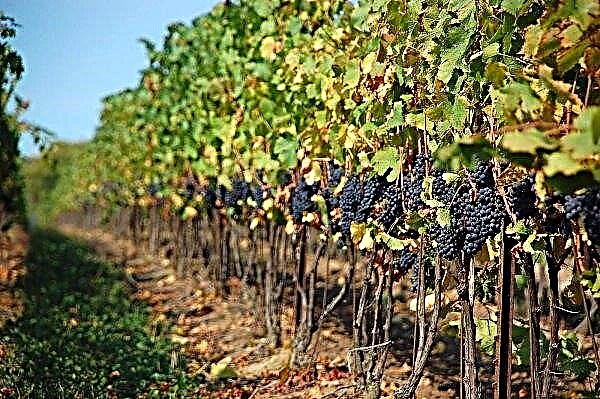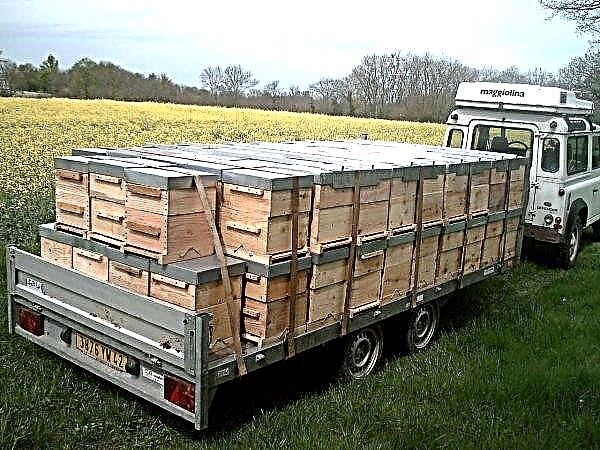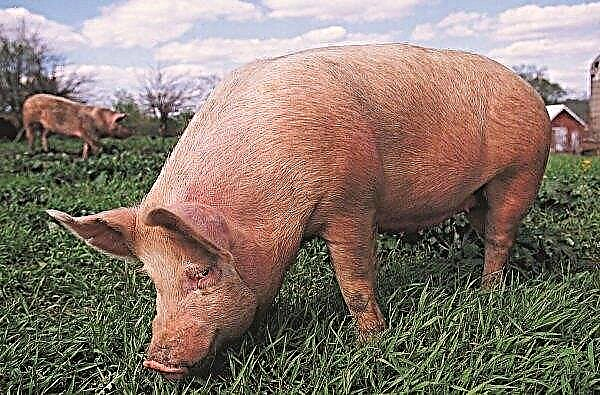It is wonderful when there is a comfortable sitting area in or near the house. A place where you can relax, enjoy the beauty of nature, have a good time in the company of friends or family. Everyone dreams of this corner. Further, the article considers options for such premises or sites.
What is a porch
The veranda is a room adjacent to the house, which has a spacious area, walls, roof and, as a rule, large windows. This definition may vary depending on the characteristics of a particular residential area.
Most often, the verandas are divided into two types:
- closed;
- open.

The veranda of the closed type is designed for year-round use. The windows in this room are glazed, which allows you to be in it in the cold season. Some owners insulate the walls, equip this extension with heating or a fireplace in order to feel in winter as comfortable as possible. In summer, windows can be opened on the veranda for access to fresh air.
Did you know? Numerous studies have shown that during natural disasters, structures made of wood are better preserved than other structures made of other materials. For example, impacts crumbling concrete can only slightly damage wood because it is elastic.
The open type of room is designed for a warm period. The design has no windows, is not glazed, so during strong winds or cold temperatures you can not be in it.

What is the difference between a veranda and a terrace
Both areas are designed for relaxation and have a number of similar characteristics. These are places where you can retire with nature, place guests at the table or do creative work. But there are also differences. Further in the article you can learn in more detail about their differences.
By design
The veranda is surrounded by full walls with large windows. There should be a lot of natural light in this room. The roof of the building is made from the same materials (for example: metal tiles, asbestos-cement slate, corrugated board, ondulin, etc.) as the main part of the house. The foundation of the veranda and the entire building is common. This recreation area can be built during the construction of the house or attached to it later.  Also, often the structure is built on the roof in the presence of a flat roof.
Also, often the structure is built on the roof in the presence of a flat roof.
Terrace is a platform on a special hill, which is located next to the house, and in contrast to the above premises is a summer building. It can be an open extension to the house or a platform near it. Most often, the terrace is built on its own foundation. The sides of the structure should have pronounced boundaries. A canopy for the site is optional. Its presence is determined by the owner of the structure.
By appointment
Two of the above premises are most often intended for recreation. The veranda can be seen not only in residential buildings, but also in hospitals, kindergartens or sanatoriums. It can grow ornamental plants. This room is as if created for a living corner or a winter garden. In the room you can put exercise equipment for sports.

Also, the veranda is often used as a zone for storing seasonal things: sledges, skis, summer garden furniture, etc. In this room you can put a large table to receive guests.
Terraces in private houses are often decorated with fresh flowers or they can act as an additional element of landscape design in the territory of a personal plot, park, square. Outdoor decking is a great place to cook kebabs or sunbathe. In luxury hotels and private homes, the terrace is often used to accommodate a pool or jacuzzi. This site can be seen in various cafes and restaurants.Did you know? In England there is a full-fledged residential Lego house from the designer. Built it fan of children's toys for himself James May

Advantages and disadvantages
- The benefits of the veranda:
- use year-round if the design is closed;
- the increase in the size of the premises due to the additional area;
- the design of the exterior of the extension (planting, painting walls, etc.);
- additional sound insulation for the main part of the house;
- insulating the front door from the penetration of cold wind.
- The disadvantages of the veranda:
- the need to remodel documents for the house, if the premises were already attached to the existing building;
- the presence of a roof and full walls, which for a summer vacation can be a minus.

- Terrace Benefits:
- the possibility of placing on the site a barbecue or equipment for a summer kitchen;
- lack of walls and open access to fresh air.
- Cons of the terrace:
- use only in the summer;
- lack of protection from strong winds.

Each of the extensions has its pros and cons. It is very difficult to determine which is better, since each owner of a house or a summer residence must decide for what purposes he wants to build this building. If you like to relax in the summer under the open sun, then of course you should choose a terrace. For year-round use it is necessary to build a veranda.
Construction Features
The construction of any building or structure is a time-consuming process. It is necessary to take a responsible approach to this matter. The usual extension to the house or the site next to it must meet the norms and standards. Further, the article discusses the main features of the construction of the above structures.
Verandas
In this article, you already learned that there are two types of verandas. Before starting construction work, it is necessary to determine whether the room will be glazed or not. In the case of a closed type, it is worth thinking about heating and wall insulation. It is recommended to plan the structure in advance to lay a solid foundation for the entire building.
- The most popular materials for the construction of verandas are brick and wood. They have a number of positive characteristics:
- strength;
- good thermal insulation;
- wide selection in the market of building materials, etc.
If you decide to attach the veranda to the finished house, then pay attention to the fact that the exterior decoration of the house or cottage matches the entire building. The design should harmoniously fit into the overall design of the structure.
Important! If you finish building the veranda to the finished house, then you need to deepen the foundation at least 30 cm to avoid skewing the structure.
Terraces
The construction of the terrace also has its own characteristics, since this design can be located next to the dwelling, away from it or on the roof. The site is being built with or without a foundation. There are no windows in this recreation area. The construction happens with or without a roof. The canopy should be attached to the supporting posts, which are installed on the surface of the site.

Most often, the railing of the site is a railing or semi-wall. It all depends on the wishes of the owner himself. The materials for the construction of the structure are used the same as in the construction of ordinary buildings (brick, wood, metal, foam blocks, etc.). Precipitation can easily get on the site, so the wood must be moisture resistant (for example: boards made of oak, spruce or pine, covered with a protective compound).
What is the difference between a veranda and a gazebo
The veranda and arbor have very few similar characteristics. The difference between them is big. Both the first and second options are places to relax.

The main differences of the gazebo are:
- the site is not adjacent to the house;
- in most cases, a structure without a foundation;
- building materials may differ from those used for the home;
- it is only a summer recreation area;
- You can install a barbecue or grill.
Each of the presented corners for relaxation has its own advantages. Modern construction and design solutions allow you to implement several such zones in your home and in the territory near it. But if you decide to dwell on one option, then be sure no matter what your choice is, being in such a place will bring you a lot of pleasure.Important! When choosing a gazebo design, be sure to consider the style in which your house is built. The similarity of these objects will create a harmonious atmosphere on the site.












